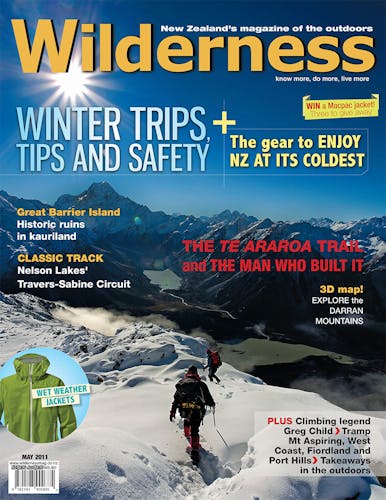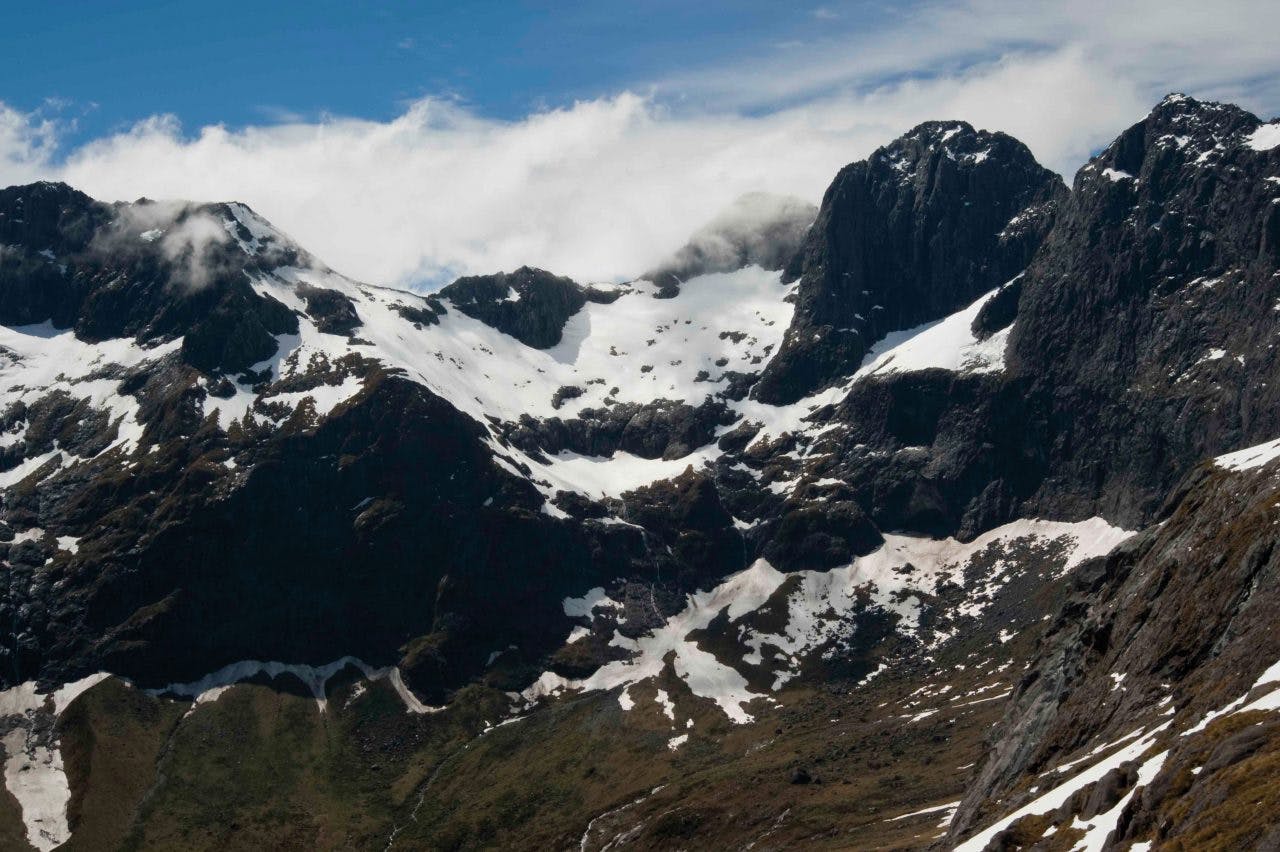The Darran Mountains contain Fiordland’s highest peaks and some of New Zealand’s most arresting mountain scenery. Here Ice Age glaciers have scooped out magnificent alpine lakes, carved precipitous mountain walls, and shaped virtually every aspect of the topography. While these monstrous glaciers have long since retreated, many of the area’s highest peaks still boast significant glaciers as well as the Ngapunatoru Plateau – an ice shelf about one square kilometre in extent.
The Milford Sound Road (SH94) provides easy access into the heart of these mountains, even passing under them through the Homer Tunnel. While most of these mountains are beyond the skills of anyone but mountaineers, a few tracks and routes provide opportunities for trampers and walkers.
1. Homer Hut
The New Zealand Alpine Club’s Homer Hut is the best base from which to explore the surrounding mountains. There’s bunk space for 30, an ample kitchen, and usually a hut warden in residence. Access is just off the Milford Road before the Homer Tunnel. After particularly heavy rain, the ford between the car park and hut can become cut off.
2. Gertrude Saddle and Valley
Arguably one of the finest alpine day tramps in the country, the route to Gertrude Saddle offers fine views over Milford Sound and the heart of the Darrans. An easy track leads up Gertrude Valley until climbing slopes beneath Barrier Peak and Knob, where the terrain steepens around Black Lake. Gertrude Saddle itself offers easy tussock slopes, although the far side is precipitous – William Quill, conqueror of Sutherland Falls, lost his life attempting this face. Although the route to Gertrude Saddle is easy enough in late summer conditions, it is extremely hazardous whenever avalanche danger exists and should then be avoided.
3. Barrier Knob and Gifford’s Crack
From Gertrude Saddle, mountaineers with adequate experience can continue over Barrier Knob and down to Adelaide Saddle, where Gifford’s Crack provides a route into the head of Moraine Creek.
4. Lake Adelaide and Moraine Creek
Trampers will prefer to access Lake Adelaide using a track up the Moraine Valley. This begins from the Lower Hollyford Road, across a footbridge over the Hollyford River and then a walk-wire over Moraine Creek, where the track ascends through dense forest to the bushline. Beyond here, sporadic cairns lead around a large moraine field behind which is the basin occupied by Lake Adelaide. Sabre Peak is the most formidable of several peaks surrounding the cirque basin. Reaching the valley head requires a solid 9-11hr from Hollyford Road.
5. Gill’s Bivvy
Near the head of Lake Adelaide, reached after sidling around ledges on the true left, is a large boulder which climbers have fashioned into a comfortable shelter. Another rock shelter, Phil’s Biv, is located a kilometer closer to the base of Sabre. Both provide good refuge from the area’s often-bad weather.
6. Lake Marian
Lake Marian is a small lake occupying a cirque basin just over the ridge from Lake Adelaide, and while rivaling its neighbour in beauty it exceeds it in accessibility. Trampers and walkers wanting a less strenuous day trip can use a good track that begins from a large car park beside the Lowe Hollyford Road and climbs steadily through forest to reach the lake edge. Allow 3-4hr return.
7. Mt Tutoko
This is the Darran’s highest peak at 2723m. Although well shy of its loftier Southern Alps counterparts, Tutoko makes up for any lack of height by formidable defenses: notoriously fickle weather, fortress-like precipices and typically difficult approaches through dense, wet and mossy Fiordland forest. Mountaineers most often climb its north-western ridge from the Ngapunatoru Plateau and often exit down Grave Couloir.
8. Turner’s Biv
Turner’s Biv is named after mountaineer Samuel Turner, one of New Zealand’s most significant early mountaineers, who first climbed Tutoko in 1924. The biv is reached after slogging up a rough track through the Tutoko Valley, then up steep slopes above the bushline. It’s used as a base for climbing Tutoko and Madeline.
9. Mt Madeline
Madeline (2536m) is Fiordland’s second highest peak and in comparison to Tutoko, a relatively easy, but no less beguiling mountain.
10. Homer Saddle and Nature Walk
From a car park near the entrance to Homer Tunnel, this short walk offers an easy and interesting introduction to the alpine scenery of Fiordland. It’s surrounded by peaks such as Talbot, McPherson, Crosscut and Moir,. For those with mountaineering experience, a steep scramble leads to Homer Saddle, where giddy views look into the headwaters of the Cleddau and Hollyford.








